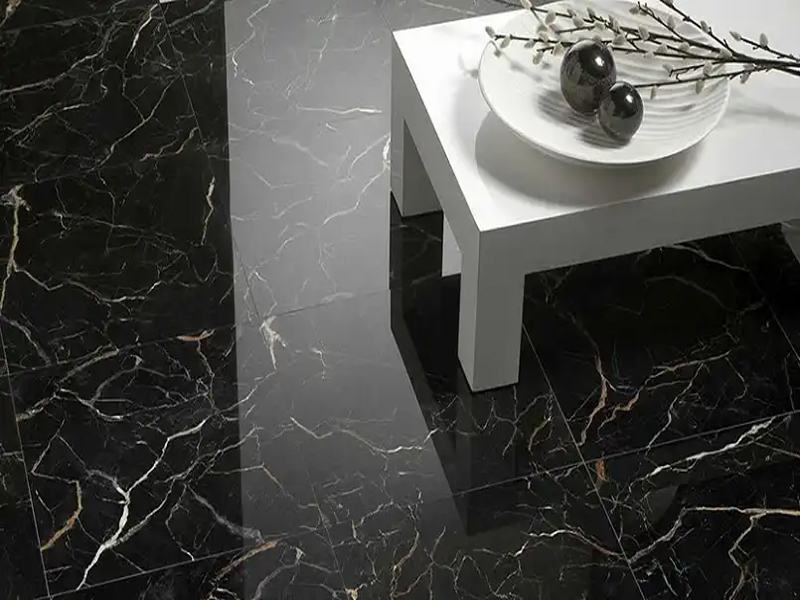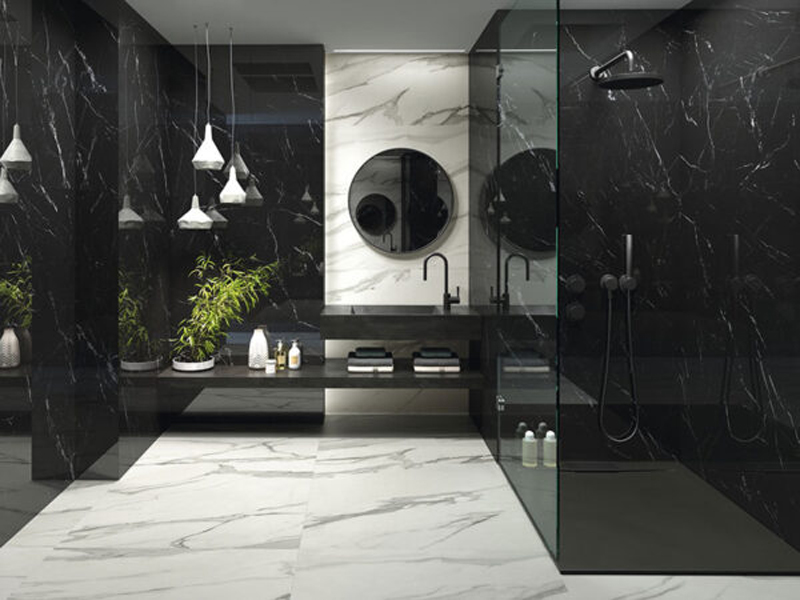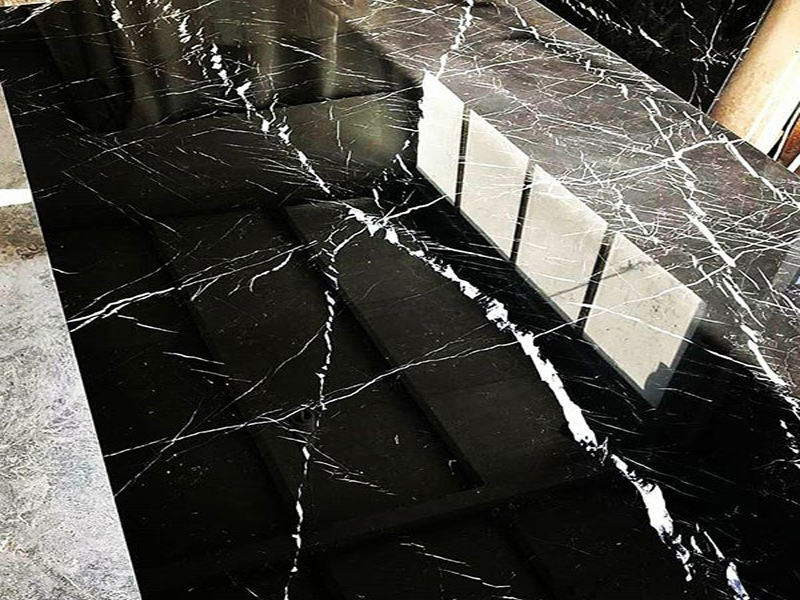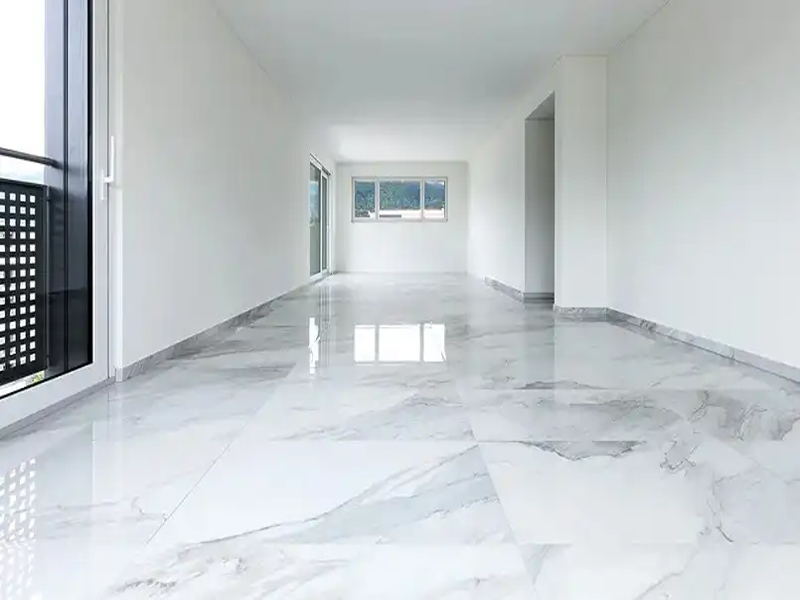
Flooring Stone
Stone is appealing to building makers due to its timeless and elegant aesthetic, durability, and natural insulation properties. It offers a practical choice for high-traffic areas, is low maintenance, and easy to clean. Additionally, the variety of colors, textures, and patterns in natural stone allows for high customization, making it versatile for a wide range of architectural styles. This makes it an attractive option for enhancing the overall look and feel of a building while also reducing energy costs and providing resilience. Due to the importance stone has in construction sector and especially in flooring, this article aims to discuss different aspects of flooring stone and some information you may need in this relation.

Why flooring stone matters?
For many centuries, many cultures all over the world have relied on stone as a traditional means of producing long-lasting, durable flooring. Stone floors are significant for the following reasons:
- Durability: Stone floors have a reputation for being resilient and long-lasting, often requiring little maintenance over many years. They are therefore a financially sensible choice in the long run.
- Aesthetic appeal: Stone floors give any area a classic, organic beauty. They can improve the overall aesthetic of a space or building and are available in a range of hues and textures.
- Low maintenance: Stone floors are a sensible option for high-traffic areas because they are reasonably simple to clean and maintain.
- Environmental benefits: Stone is a natural material, and using it for flooring reduces the need for synthetic materials and the environmental impact of manufacturing and disposal.
- Heat retention: They are a good option for homes in colder climates because of their capacity to retain heat.
Overall, the benefits to the environment, practicality, low maintenance, durability, and aesthetic appeal of flooring stone make it significant. Stone floors are a popular choice for many builders and homeowners because of these factors.
How to choose a flooring stone?
When selecting stone for flooring, there are several important features to consider. By considering these features, you can make an informed decision.

Hardness
When we want to use flooring stone, it needs to be sufficiently hard. The stone’s hardness describes its capacity to tolerate pressure, impact, and wear without breaking. The Mohs scale, which goes from 1 (softest) to 10 (hardest: as diamond), is frequently used to determine how hard a stone is. Greater hardness stones, like marble, granite, and quartzite, are better suited for high-traffic areas because they are less prone to chip, crack, or scratch. Conversely, less hard stones like travertine and limestone might not be as resilient and might eventually show wear. Selecting a stone for flooring requires careful consideration of the space’s unique requirements and traffic patterns, in addition to the upkeep and care needed to maintain the stone’s best appearance.
Durability
Selecting a flooring stone requires careful consideration of its durability. It alludes to how resilient the stone is against stains, scratches, and other types of damage in addition to its capacity to take daily use. High-traffic areas are great places for durable stones like granite, quartzite, and slate because they are less likely to break and can tolerate heavy use. Conversely, more delicate stones like marble, limestone, and travertine could need more upkeep and be more prone to stains and scratches. When selecting a stone for flooring, it is crucial to consider the particular requirements of the area, such as foot traffic and possible exposure to spills or large objects. To ensure the stone’s durability over time, it is also essential to take into account its requirements for long-term maintenance and care.
Slip resistance
When selecting a stone for flooring, especially in areas that might be exposed to moisture or spills, slip resistance is an important consideration. It speaks to the stone’s capacity to increase traction and lower the chance of slipping. Because natural stones like slate and textured granite are well known for having superior slip resistance, they are perfect for use in bathrooms, kitchens, and outdoor areas. Smoother stones, such as polished limestone and marble, on the other hand, might be more likely to become slick when damp. When choosing a stone for flooring, it’s crucial to evaluate the particular needs of the area as well as the possibility of spills and moisture. Furthermore, for some types of stone, applying sealants and finishes intended to improve slip resistance may be advantageous. Slip resistance is given priority in order to guarantee the flooring’s usability and safety in a variety of settings.
Color and pattern
Color and pattern are essential considerations when choosing a stone for flooring, as they significantly impact the overall aesthetic and design of a space. The stone’s color should create the right mood and blend in with the existing furnishings and decor. Darker stones like slate and granite can add warmth and depth to a space, while lighter stones like marble and travertine can make a space feel airy and open. Whether it is mottling, speckling, or veining, the stone’s pattern adds to the flooring’s visual appeal and feel. When selecting the color and pattern of the stone, it’s also important to consider the size and layout of the area because specific patterns and colors can change how a room appears to flow and be larger. In the end, getting the right aesthetic and atmosphere in a space requires careful consideration of the color and pattern of the stone.
read more: Stone Facade
Maintenance
Maintenance is a critical factor to consider when choosing a stone for flooring, as it directly impacts the long-term care and upkeep of the surface. Different kinds of stone need different amounts of upkeep, such as periodic resealing, cleaning, and sealing. For example, non-porous stones like granite and quartzite are generally easier to maintain, but porous stones like marble and limestone may need more frequent sealing to guard against stains and moisture absorption. It’s critical to evaluate the stone’s maintenance needs in light of the particular requirements and usage of the area. Maintaining the stone’s longevity and aesthetic requires an understanding of how it responds to spills, foot traffic, and cleaning agents. In order to make sure that the Floor stone lasts for a long time, it is also essential to take into account the time and effort needed for maintenance.

Size and thickness
The size and thickness of the stone tiles or slabs should be suitable for the intended space and installation method. Smaller tiles can provide fine detail and visual interest, while larger tiles or slabs can give an impression of space and coherence, particularly in open areas. In addition, the stone’s thickness plays a critical role in guaranteeing its stability and longevity, especially in high-traffic areas. In general, thicker stones—roughly 3/4 inch or 2 cm in thickness—are better suited for flooring because they offer greater structural integrity and are less likely to chip or crack. Although thinner stones work well as decorative accents or wall cladding, they might not be as durable for flooring. In order to achieve the desired aesthetic while ensuring that the stone can withstand the demands of daily use, it is crucial to choose the right size and thickness for the space.
Heat resistance
In areas where there is exposure to heat, such as near fireplaces or in outdoor spaces, the stone should be able to withstand high temperatures without cracking or discoloration. Some natural stones, such as granite and quartzite, are highly heat-resistant and can withstand direct contact with hot cookware or radiant heat from fireplaces. On the other hand, softer stones like marble and limestone may be more susceptible to damage from heat, making them less suitable for areas prone to high temperatures. It’s crucial to assess the potential heat exposure in the space, such as kitchens or around fireplaces, and select a stone that can withstand these conditions without sustaining damage or discoloration. Understanding the heat resistance of the stone is essential for ensuring the longevity and performance of the flooring, especially in areas where heat exposure is a factor.
Suitability for the environment
Consider the specific environmental conditions of the space where the Floor stone will be installed. The resistance of natural stones to particular environmental factors varies. For example, some stones, like granite or sandstone, are more weather-resistant and therefore better suited for outdoor use, while other stones, like marble or travertine, might be more appropriate for indoor use. Additionally, factors such as moisture, humidity, and temperature fluctuations in the environment should be considered when selecting a stone for flooring. Choosing a stone that can handle these particular challenges without deteriorating or becoming damaged requires an understanding of the environmental conditions of the space, whether it’s an outdoor patio, kitchen, or bathroom. By evaluating the stone’s environmental suitability, one can make sure that the flooring will hold up over time and continue to provide long-lasting beauty and functionality.
Cost
The cost of the stone and the installation should be factored into the decision. Some types of stone may be more expensive than others, and the cost of installation can vary based on the complexity of the project. The price of natural stone can vary widely based on factors such as rarity, quality, and the difficulty of extraction and processing. Some stones, like marble and onyx, are considered more luxurious and can be more expensive, while others, such as slate and limestone, may be more budget-friendly. Additionally, the cost of installation, maintenance, and potential repairs should also be factored into the overall expense. It’s important to consider the long-term value and durability of the stone in relation to its initial cost, as some higher-priced stones may offer greater longevity and resilience, ultimately providing a better return on investment.
Source and sustainability
For environmentally conscious consumers, it’s important to consider the source of the stone and whether it is harvested and processed in a sustainable and ethical manner. Natural stones are frequently taken out of quarries; therefore, it is important to consider how quarrying, processing, and transportation will affect the environment. One way to source sustainable stone is to look for quarries that follow ethical mining practices, use recycled materials, or source locally to cut down on transportation-related carbon emissions. Furthermore, certain stones could be certified by organizations like NSF/ANSI 140 or LEED (Leadership in Energy and Environmental Design), which attest to their adherence to sustainability and environmental guidelines. It is crucial to take into account the effects that the production and extraction of the stone will have on the environment, in addition to any potential recycling or reuse at the end of its life cycle.

Last words
In conclusion, flooring stone holds significant importance in the construction sector due to its durability, aesthetic appeal, low maintenance, environmental benefits, and heat retention properties. When selecting stone for flooring, several crucial features must be considered, including hardness, durability, slip resistance, color and pattern, maintenance, size and thickness, heat resistance, environmental suitability, cost, and sustainability. These features play a vital role in ensuring that the chosen stone is suitable for the intended space, can withstand the demands of daily use, and aligns with environmental and ethical considerations. By carefully evaluating these features, building makers and homeowners can make informed decisions about flooring stone, ensuring that it not only enhances the visual appeal of a space but also provides long-lasting functionality and sustainability. Ultimately, the careful selection of flooring stone can contribute to the creation of beautiful, resilient, and environmentally conscious living and working spaces.
for more information click here

